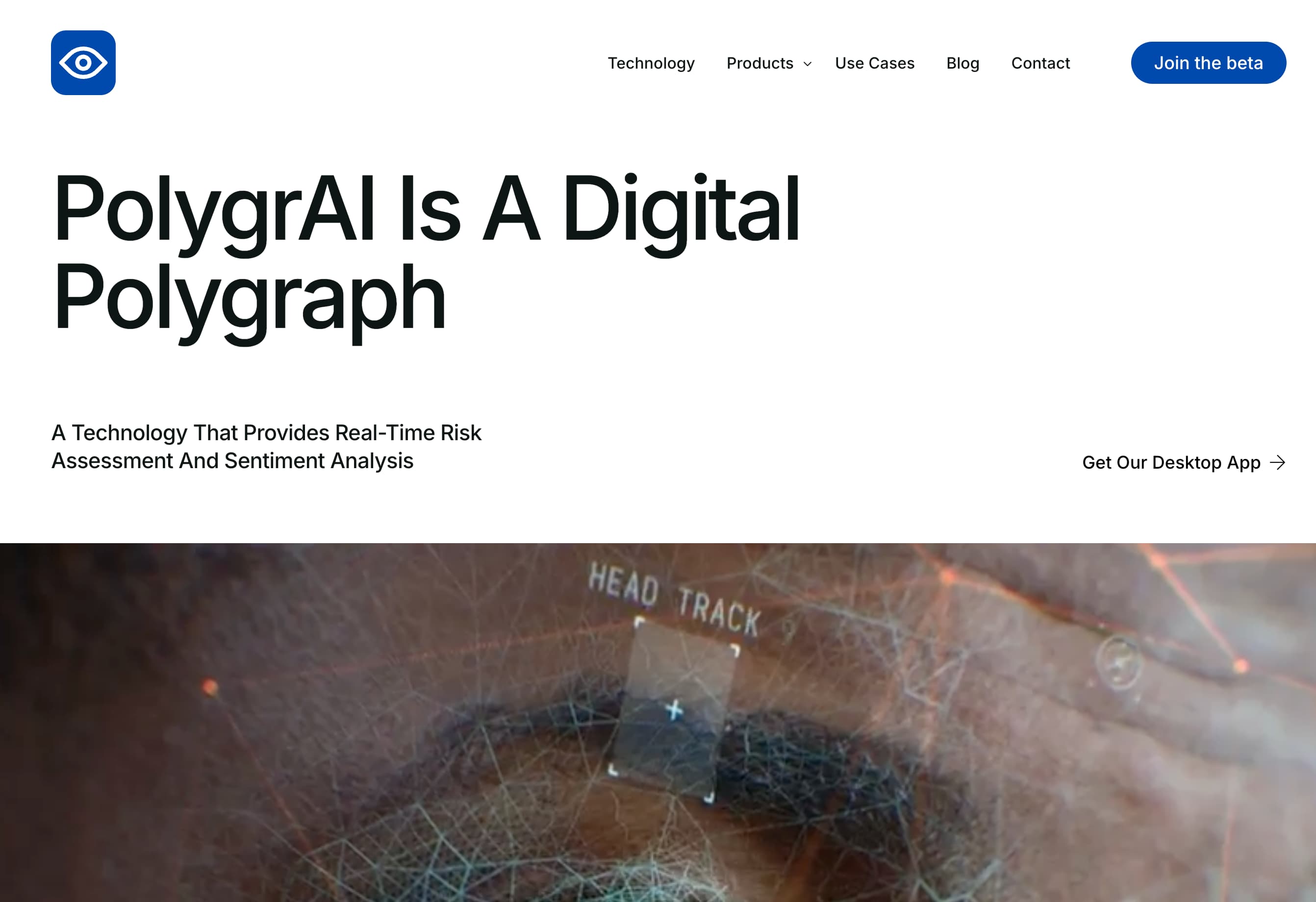

Polygrai
Overview :
PolygrAI is an advanced digital multimodal polygraph that fuses psychological principles with cutting-edge artificial intelligence and computer vision technology. By analyzing visual, audio, and linguistic cues, it identifies behavior fluctuations in real-time that may indicate stress or deception. This technology not only enhances the accuracy of deception detection but also provides valuable insights for decision-making in various application scenarios. Background research supporting PolygrAI includes studies by Barathi (2016) and Ding et al. (2019), demonstrating the effectiveness of multimodal approaches in detecting deception. The product does not collect user data, prioritizes privacy protection, and is developing a mobile version.
Target Users :
Target audience includes psychotherapists, insurance professionals, investors, human resources and recruiting personnel, management teams, law enforcement agencies, and border control officers. These users can benefit from the objective insights provided by PolygrAI to more accurately assess the true emotional states and potential issues of clients, employees, or suspects, thus making more personalized and effective decisions.
Use Cases
Psychotherapists use PolygrAI to gain insights into clients' emotional states for more effective therapeutic interventions.
Insurance companies utilize PolygrAI for more accurate risk assessments during claims processing and underwriting.
Human resources departments assess candidates' emotional states and behaviors with PolygrAI to identify suitable individuals aligned with the organization's values.
Features
Facial micro-expression analysis: Captures and analyzes fleeting facial expressions that are difficult for the human eye to detect, revealing underlying emotions or deceptive intentions.
Body language monitoring: Provides detailed analysis of body movements and postures to detect behavioral fluctuations.
Vocal attributes analysis: Monitors tone and pitch to identify subtle changes related to risk.
Physiological signal detection: Uses remote photoplethysmography to analyze heart rate variations, serving as key indicators of stress or deceptive behavior.
Real-time emotional state analysis: Offers a comprehensive view of the individual's emotional state, aiding in understanding overall emotions and potential intentions.
Linguistic analysis: Evaluates word choice to identify patterns associated with deceptive behavior.
Baseline learning: Employs algorithms to learn and establish each individual's behavioral baseline, enhancing the precision of risk assessment.
Risk assessment: Integrates visual, auditory, and physiological data sources to provide a comprehensive risk score.
How to Use
Download and install the PolygrAI desktop application.
Launch the application and complete the user setup as prompted.
During behavioral analysis, ensure the subject is within the effective range of the camera and microphone.
Select the appropriate analysis mode, such as individual assessment or group assessment.
Observe real-time feedback and risk scores to make informed decisions based on the analysis results.
If necessary, delve deeper into detailed data across various analysis dimensions.
After completing the assessment, take follow-up actions based on the information provided by PolygrAI.
Be mindful of protecting personal privacy and ensure the assessment process complies with ethical and legal standards.
Featured AI Tools

Pimeyes
PimEyes is an advanced facial recognition search engine and reverse image search tool used to find where your photos are published online. It uses facial recognition technology to perform reverse image searches, helping you locate faces within images and protect your privacy. It can also be used to detect copyright infringement. Pricing: PROtect plan. Target audience: Users who want to track their faces on the internet, safeguard their image rights, and monitor their online presence.
Safety
837.4K
Chinese Picks

Xunfei A.I. Intelligent Customer Service Solution
The Xunfei A.I. Intelligent Customer Service Solution is a comprehensive customer service system provided by Xunfei based on its advanced speech technology. The system achieves intelligent outbound calling, intelligent answering, voice navigation, online text customer service, quality inspection analysis, and seat assistant functions via various channels such as phone, Web, APP, miniprograms, and self-service terminals. It improves customer service efficiency, reduces labor costs, and enhances the customer service experience through technologies such as a high recognition rate speech recognition engine, natural and smooth speech synthesis technology, intelligent interruption ability, IVR navigation, and customer service platform middleware.
Customer Service
247.0K












